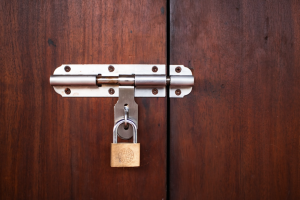6 Tips for Reacting to and Recovering from Bicycle Accidents

Bicycling is a popular mode of transportation and a great way to stay fit. However, accidents can and do happen. Knowing how to react and recover from a bicycle accident can make a significant difference in your physical and emotional healing process. Here are six tips to help you navigate this challenging experience.
1. Assess Your Immediate Safety
The first and most crucial step after a bicycle accident is to ensure your immediate safety. If you are able to move, get out of the way of oncoming traffic to prevent further injury. Look around to see if you or anyone else involved is in immediate danger. Check yourself for any serious injuries such as broken bones, severe bleeding, or head trauma. If you are unable to move or feel intense pain, try to stay as still as possible and wait for medical assistance. It's essential to remain calm and take deep breaths to manage shock and anxiety. Assessing your immediate safety helps you make rational decisions and reduces the risk of further harm.
2. Call for Help
Once you are in a safe location, call for help. Dial emergency services to report the accident and request medical assistance if needed. Even if you feel fine, it’s important to get checked by a professional, as some injuries may not be immediately apparent. While waiting for help to arrive, gather information from any witnesses and take photographs of the scene. Documenting the details of the accident can be invaluable later on, particularly if you decide to file a personal injury claim. This documentation can include the positions of the vehicles involved, any road conditions that might have contributed to the accident, and visible injuries you have sustained.
3. Seek Medical Attention
Even if you don’t think you’re seriously injured, it’s essential to seek medical attention following a bicycle accident. Some injuries, such as concussions or internal bleeding, may not show symptoms right away but can be life-threatening if left untreated. A medical professional can provide a thorough examination and ensure that any injuries are properly diagnosed and treated. Additionally, obtaining medical records immediately after the accident provides documented evidence of your injuries, which can be crucial if you pursue compensation later. Follow all medical advice and attend all follow-up appointments to ensure a complete recovery.
4. Consult with a Bicycle Accident Lawyer
Navigating the aftermath of a bicycle accident can be complex, especially when dealing with insurance companies and legal matters. Consulting with a bicycle accident lawyer can provide clarity and guidance through this process. A lawyer specialized in bicycle accidents can help you understand your rights, evaluate the strength of your case, and advise on the best course of action. If necessary, they can also represent you in court to pursue a personal injury claim, maximizing your chances of obtaining the justice and compensation you deserve. Also, they can assist in negotiating with insurance companies to ensure you receive fair compensation for your injuries and damages.
5. Report the Accident
Reporting the accident to the police is a critical step, especially if it involved a motor vehicle. The police will create an official accident report, which can be a vital piece of evidence if you need to file an insurance claim or a personal injury lawsuit. When speaking with the police, provide an accurate and detailed account of what happened but avoid speculating or admitting fault. Request a copy of the accident report for your records. This report will help corroborate your version of events and support your case should legal action become necessary. Additionally, informing your insurance company about the accident promptly is important to facilitate any claims process.
6. Preserve Evidence
Preserving evidence is key to protecting your rights after a bicycle accident. Keep all physical evidence from the scene, such as damaged bicycle parts, torn clothing, and any other items that can illustrate the extent of the accident. Take detailed photographs of your injuries, the accident site, and any damage to your bicycle or other property. Store all medical records, repair bills, and any correspondence related to the accident. This comprehensive collection of evidence will be invaluable if you decide to seek compensation. It helps substantiate your claims and demonstrates the impact the accident has had on your life, both physically and financially.

Recovering from a bicycle accident involves both immediate actions and long-term considerations. Ensuring your safety, seeking medical attention, documenting the incident, preserving evidence, and consulting with a specialized lawyer are all crucial steps. By following these tips, you can better manage the aftermath of an accident and focus on your recovery. Staying informed and prepared helps you protect your rights and navigate the complex journey to recovery more effectively.






